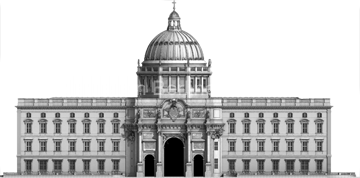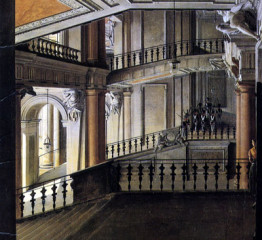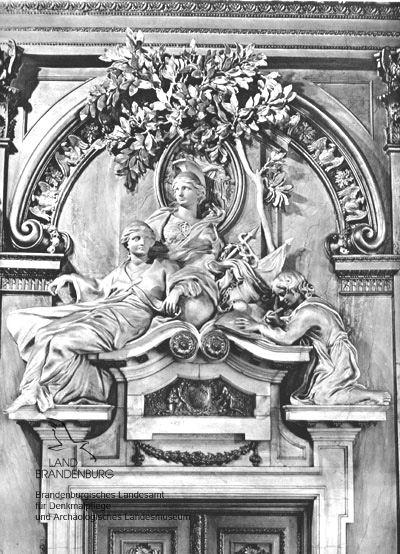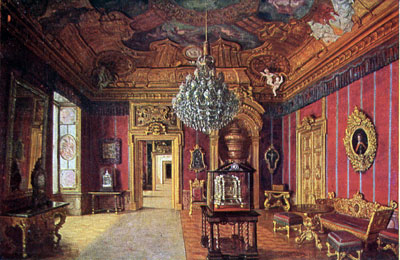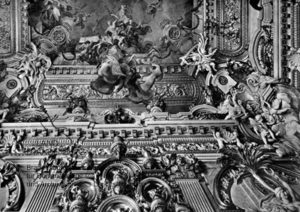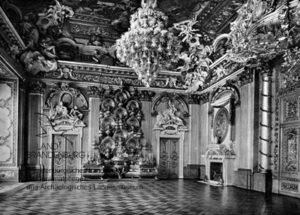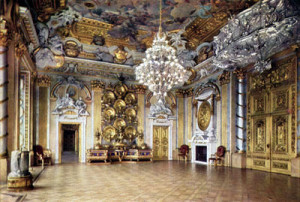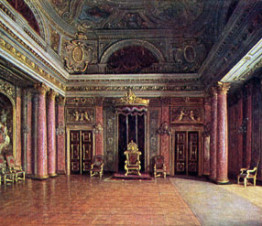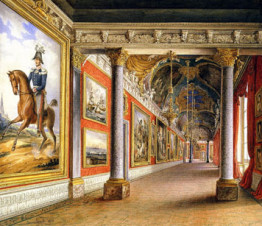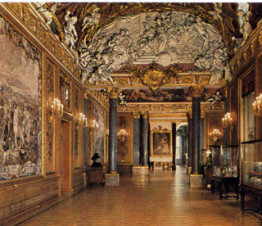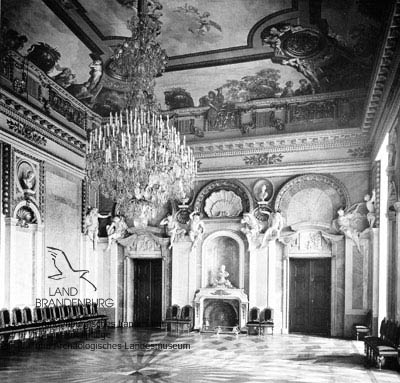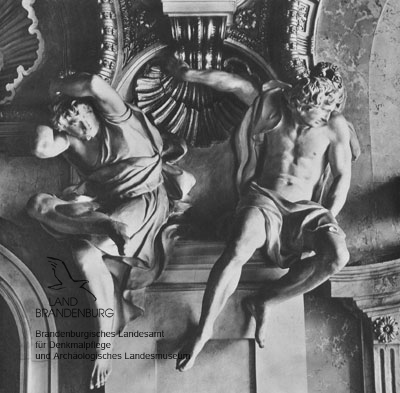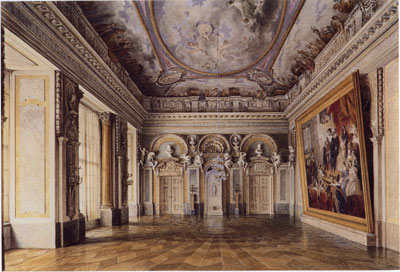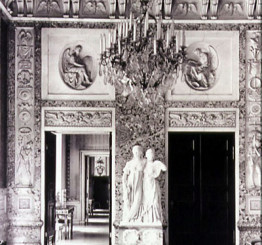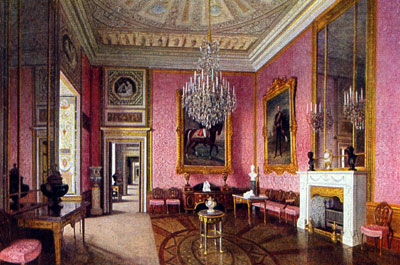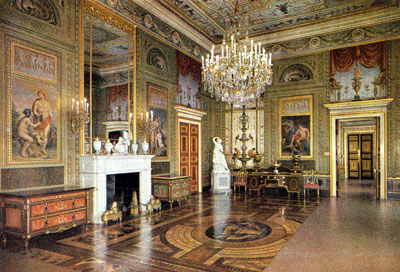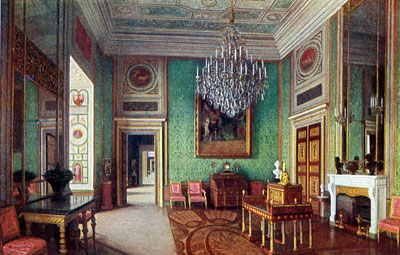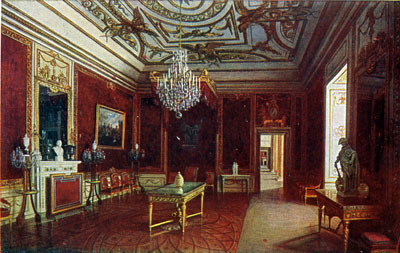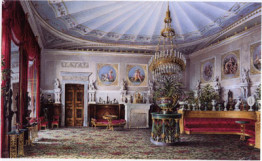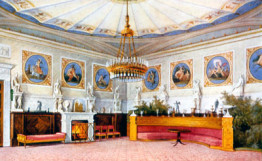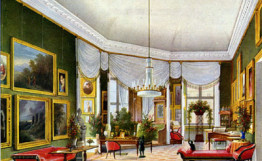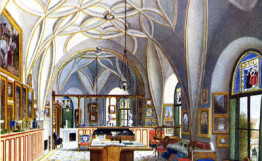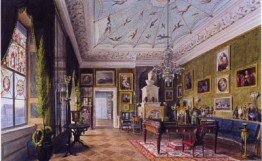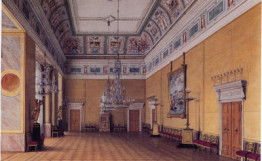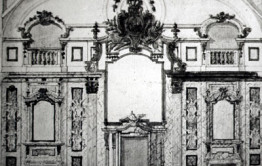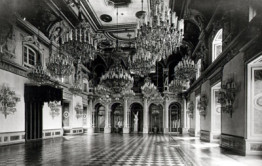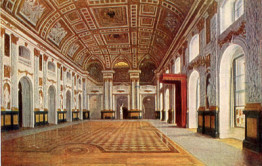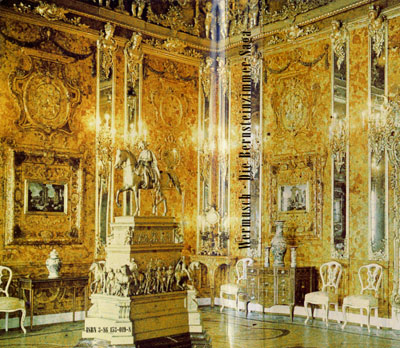A gift to the Tsar:
In 1713, Friedrich I died, leaving behind huge debts. His successor was extremely frugal and did not care for his father’s grandiosity. He therefore did not think much either of the ‘Cabinet of Amber’.
In 1716, Tsar Peter 1 of Russia was at the Berlin court. In cavalier fashion, he mentioned what he would most like to take away with him as a gift from the city. Friedrich Wilhelm I thus gave him valuable treasures from his father’s possessions in order to ensure his goodwill as an ally, in particular in relation to the takeover of Pomerania by Brandenburg- Prussia.
“…that the King gave the Tsar two valuable presents, namely the splendid, beautiful hunting ship (in today’s parlance, a luxury yacht) and precious amber panelling for the complete cladding and lining of a chamber…The Tsar indicated most courteously that he would give great consideration to a return gift.”
The Amber Room had cost 30,000 Imperial Thalers, far less than the ‘Hunting Ship’, which was worth 100,000 Thalers. In 1717, the room left Berlin and via Memel and Riga was taken to St. Petersburg. There it was initially installed in an old winter house and six years later in the winter palace. From there it moved in 1755 to the Catherine Palace in Tsarskoye Selo. Modelled on Versailles, this was the summer residence of the Russian tsars.
The Amber Room in St Petersburg in the Catherine Palace, Tsarskoye Selo:
To integrate the Amber Room into a hall around six times as large in such a way that despite this massive increase in size the room’s original character was retained took eight years. The man charged with the task was Carlo Rastrelli, assisted by fellow Italian Alexander Martelli. Naturally, the panels that had been put into storage following the room’s installation in Berlin Palace were
also used in this project. It was by then Frederick the Great who gave them to the Tsar.
In addition, many new parts had to be made. These included, for example, 24 Venetian mirrors and one amber-framed mirror. After the enlargement, the room thus consisted only to a relatively small degree of the original room from Berlin Palace. The statue of Frederick the Great, created as a miniature copy of the famous statue in Berlin, was not put up until the 19th century, when it was added as a sign of admiration and gratitude to this Prussian King.
The Tsar’s gift in return for the Amber Room:
It was not until a few years later that the ‘Ruler of all Russians’ remembered that he had promised a gift in return.
King Friedrich Wilhelm I had a preference for tall soldiers, whose height had to be at least 1.9 metres. Fitted out with a very high cap, they were frighteningly tall, as people in the 18th century were, after all, a lot shorter than those of the 21st century. The ‘Langen Kerls’ (Tall Fellows) thus became the King’s favourite guard regiment and led to him being known as the ‘Soldier King’, although he never fought a single ‘real’ war with them.
In order to indulge the King’s preference, the Tsar therefore sent 55 ‘Tall Fellows’ armed with guns from Tula to Berlin in the summer of 1718. He also sent a wood-turning lathe (for which the King also had a penchant), a rowing boat and an ivory cup that he had made himself.
Now that is the true story!
(Sources: Günter Wermusch: Die Bernsteinzimmer – Saga; Goerd Peschken: Das Bernsteinzimmer, Prussian Palaces and Gardens Foundation series, 2002)
 Deutsch
Deutsch English
English Francais
Francais

